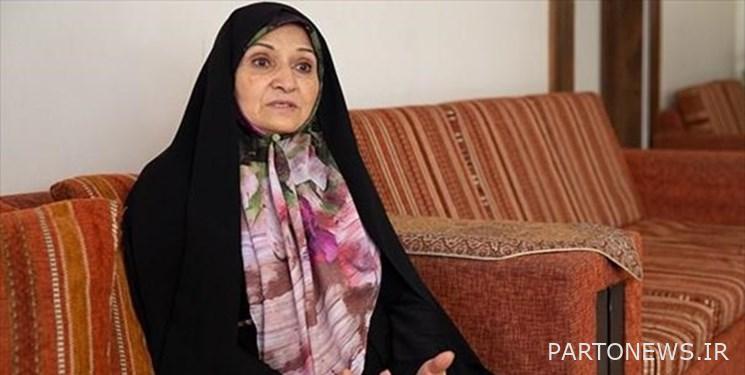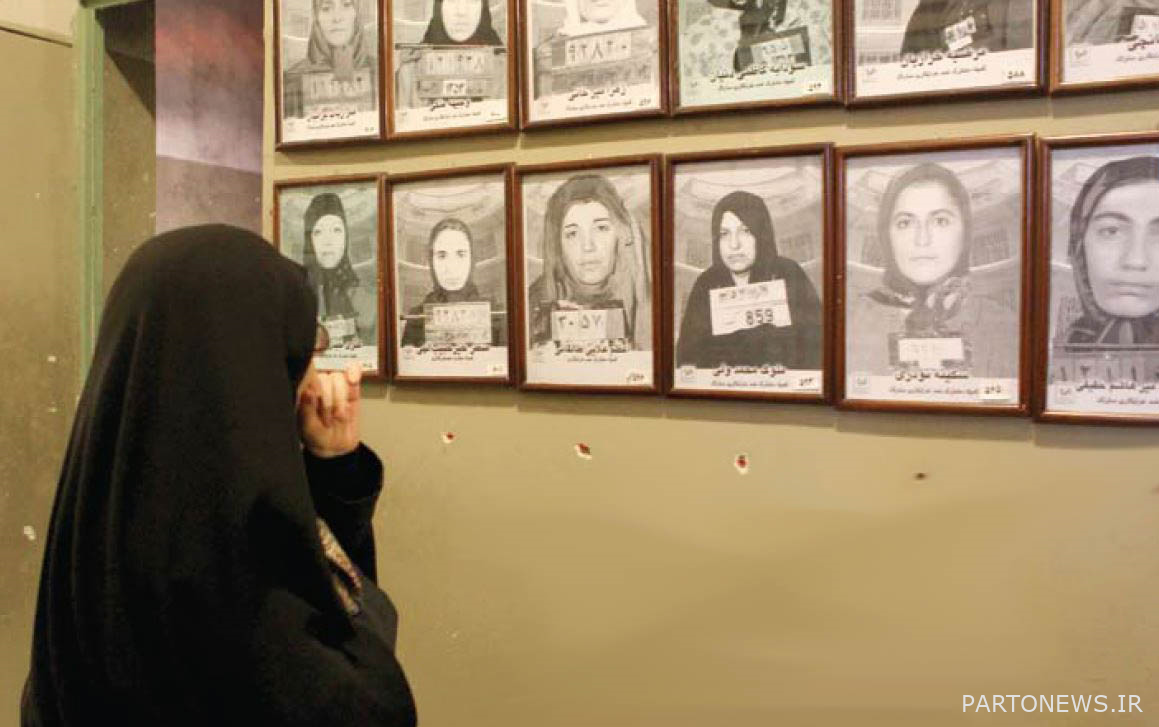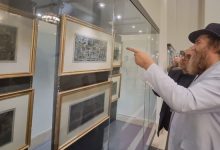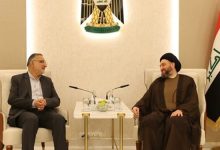How were the tortured women fighters in SAVAK prisons / revolutionary women tolerated the situation?

Family group: Undoubtedly, the role of women in the Islamic Revolution, if not more than men, is certainly not less than men. Women in various positions of mother, wife, child and sister have been present in various scenes of the revolution and have been arrested, imprisoned and tortured during the struggle.
“Habibollah’s good view” One of these women was a strong woman and a fighter before and after the Islamic Revolution of Iran and one of the teachers of the Welfare School who was arrested and imprisoned in 1973. He expelled his wife to go to the front. Memories of his imprisonment are very readable.
Here is a summary of his biography and part of his memories of the revolution:
We were four siblings and I was the third child and the first daughter. My mother and father were different from many mothers and fathers at the time, and in fact their lifestyles were different. My mother’s family roots go back to Shaykh al-Islam Ardabili. For this reason, my mother was religious and, for example, attended the Qur’an classes of Shaykh al-Islam Saduq. While around us people were either not religious or had a superficial religion. His father was also a French bookseller, reader and translator. Through them, we children became acquainted with many stories from the West that had just roots.
Five years after my birth, the story of the nationalization of the oil industry and the coup d’état of 28 August took place. So when I was a little older, the dimensions and analysis of this story were still new. Because my mother, in their own words, had been “harmed by Rezakhani” and had not been able to continue her education due to the discovery of the hijab, they all wanted us to study. The four of us all studied and were accepted to good majors and good universities. I was also accepted to study economics at the University of Tehran.
It was not very common for women to study at that time. If there were ten women in a three-person university class, seven of them were unveiled and so-called miniskirts. I taught in four schools at the same time. In all these schools, I tried to relate every lesson I taught to religious, theological, or revolutionary topics. Many children changed not only themselves but also their families. In August 1974, I was arrested by SAVAK elements from the Welfare School and brought to the SAVAK Joint Anti-Sabotage Committee. I was in the committee prison for a month and a half. I was a student at the time and at the same time working as a teacher at a welfare school.
This is how my foot was opened to SAVAK. During the month and a half that I was on the committee, I was either in a cell or I was taken in for questioning. There was a toilet at the end of the ward and no bathroom. Prisoners were hung and beaten around the circle, and then run around the circle. There was a fence around the circle so that no one would lower himself. The sound created around the circle wrapped terribly inside the cells and cells.
The sound was reflected in such a way that when someone was flogged, dozens of people seemed to be screaming while being beaten. In prison, the committee was blindfolded and punished by the interrogator if anyone managed to see other parts. The higher the number of arrests, the more benefits and incentives the Shah’s government received from the SAVAK system, and they preferred to link the fighters even for no reason and accuse them of collaborating in groups.
Sometimes interrogations were conducted as a team, for example, several people would gather in a room and one of them would say, “I will beat you.” One of them said: No, you have no right to strike, this is my sister. The other said, “Yes, Baba speaks for himself.” In fact, in a semi-dark room, a prisoner was taken around to instill fear in his heart. After this stage, they put the pen and paper in front of the prisoner and shouted: Your identity is clear, write down all your actions and activities.
If the prisoner had been shrewd at this stage and had shown composure, he would not have given much information to the Savakis and the interrogators would not have been able to get him to confess, but some who were arrested as guerrillas for any matter. They were beaten and tortured separately to get a confession. No one could be awake in the cell at night, and if we could not sleep, we would fall asleep. In the middle of the night and at any hour of it, they suddenly opened the cell door very quickly and asked with laughter and laughter: How are you?
Manouchehri’s interrogator usually always had a glass of liqueur in his shirt pocket, and whenever he tortured him, he would take some of it and bite the sandwich with his other hand. My interrogator was a man named Saeedi, and he wanted to show among the interrogators that he was relatively gentle. I once heard him say: “Every time I whip someone, I myself am tortured many times.” Saeedi wanted to show that he still had a guilty conscience, but he was often drunk and tortured drunk.
The Joint Committee constables also had varying degrees. He was a policeman whom we called “Merham”. He was a simple man. He would suddenly open the door of the cell and enter and we would tell him that you should not open the door of the cell because he was not a mahram and he also said no, I am merciful! That’s why we called him Mercy. SAVAK used the naivete of many of these people and told the same man not to see these women like this, outside the committee they do whatever they want and what they do not do. Therefore, he also harassed the children of the prisoners and was surprised by our hijab and prayers and said: No, your head, you also pray. They say out, you all work and you are omnipotent and here comes a movie for us. Yeah?

SAVAK interrogators held whips from power cords that had open ends and protruding wires, and when flogged, the metal tip of the whip hit the front and side of the foot, leaving deep wounds, and almost all of them. They entered the committee once and were not without these cables. All the prisoners were threatened by the interrogator, and this was a kind of psychological torture. Sometimes, when the interrogators tried to present themselves as outwardly righteous people, they would take the Qur’an out of their pockets or take the seal of prayer out of the drawer of the table and say: By God, we are also Muslims. Like you, we pray and recite the Qur’an. Farah is also a Muslim. The Shah’s sister is also a Muslim. You want to say that we are Muslims with these ridiculous games and fights.
During the interrogation of me, they tried to get information about Ms. Dabbagh, but she was extremely smart and we had very little information about Dabbagh. I saw many people on the committee being tortured in various ways. Ms. Daneshvari was tortured in every possible way, her nails were pulled out, and half of her finger was burned with a lighter, leaving only her finger bone inside the prison and no flesh on it. The Savakis tried to break the spirits of us all in various ways, but God really helped us not to be weak in those situations. Prisoners who were communists and did not wear hijabs were always exposed to the bad views of officers and interrogators, but religious children who even wore hijabs for themselves in prison uniforms, as if God had cast a special veil over them.
One day when I was taken to the interrogation room, I visited Ayatollah Rabbani Shirazi, while only the underwear of the clergy was tense and he had fallen on the ground. The interrogator told me, “Go back and look at this, these are your leaders.” I turned and looked, and Mr. Rabbani Shirazi, who saw my hijab, gave me an admiring look, and his look was the strength of my heart and a window to the light. In that case, I read the order of resistance from Rabbani Shirazi’s point of view. The head of this nobleman was placed in a sharp wall and he was told that he should insult Ayatollah Khomeini, and he also said why should I insult him and he did not do what they wanted.
In front of my eyes, they whipped him fifty times, while he was a thin old man with a bony leg, and I never saw him again. A woman named Amini was tortured so badly that her body was burned with a hot iron that she walked on all fours. There was a guerrilla in our cell next to us who had been severely tortured, and when they came to change his dressing, they put bloody bandages and cloths in a bucket and put it in the hallway so that we could all see and suffer while traveling. Let’s kill.
In fact, the SAVAK interrogators did not smell of humanity and did not have anything called conscience left in them. Interrogation like Manouchehri, when he wanted to sleep, he shouted in the corridor, “Doctor, give me an injection.” He could not sleep without an injection and you slept for an hour or two with his help, and when he was torturing, he would say: You will not let me be comfortable. You can not sleep anywhere.
Many loved ones did not come out of the torture chamber alive, and SAVAK, more helpless than ever, did not hear from them. Sometimes a prisoner was thrown into a pool and whipped with a wet body, and because the interrogators were always drunk, they would get drunk laughter when they saw the prisoner.
Despite all the conditions in the prison, we used to make something with the dough we had. We made very beautiful flowers and used mercury cream for its color. A basket of beautiful flowers was made and we took everyone to the bathroom. In fact, the bathroom was an exhibition of our products. The interrogators went crazy on Eid nights and Fridays and stormed into the cell, smashing everything inside the cell and taking away everything we had made. Even these things were unbearable for them and it was as if they were our prisoners and shouted that he was still alive and that he was still laughing and still breathing.
Among us were imprisoned engineers who sometimes made a very precise and clean model of a building with bread dough and took it to the bathroom. This bothered the interrogators, because they saw that we had turned it into a factory.
Indeed, the grace of God was always with us, and sometimes we had beautiful dreams that were worth a thousand joys outside prison, and we saw God’s blessings in different ways and ways in sleep and wakefulness. But the Savakis were having a very bad time. I heard from a friend that Manouchehr had tortured a person named “Hanifunjad” so much that he suddenly dropped the whip and said: “Damn this dog life we have.”
In this way, a period passed in the committee and now I always thank God that I witnessed the green period of the flourishing of dear Iran and I ask God Almighty that we all appreciate these bright moments.
Source: Research Institute for Humanities and Cultural Studies. Memoirs of the revolutionary fighter Ms. Manzar Khair Habibollahi; Banoo Amin Cultural Center and Young Journalists Club interview.
End of message /

